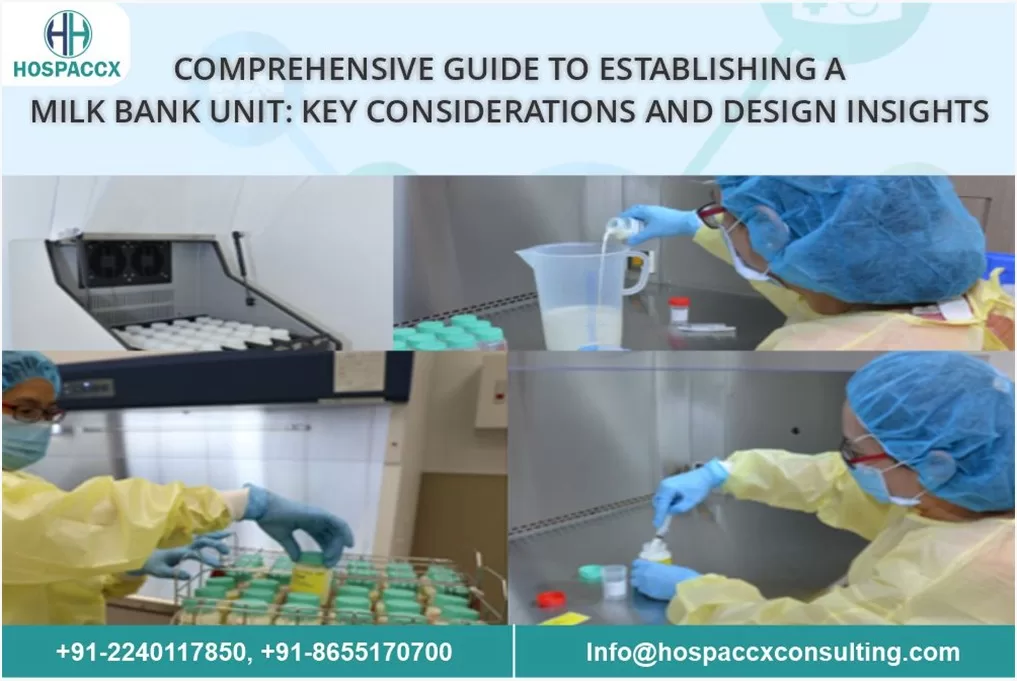The establishment of a milk bank unit is a vital step in ensuring the health and wellbeing of newborns, especially in cases where mothers are unable to breastfeed. Milk banks collect, screen, process, and distribute donor breast milk to infants in need, ensuring that every newborn has access to this crucial nourishment. Setting up a milk bank unit requires careful planning, compliance with health regulations, and thoughtful design to create a safe, sterile, and efficient environment. This detailed guide outlines the essential aspects of establishing a milk bank, focusing on both operational and design considerations.
1.Assessing Market Demand and Feasibility
Before starting a milk bank unit, a comprehensive feasibility study is crucial:
- Local Need Assessment: Understand the demand for donor milk in your community, particularly among hospitals, neonatal units, and parents who may have difficulty breastfeeding.
- Collaborations with Hospitals and Maternity Units: Partner with local healthcare facilities to understand their milk requirements and ensure a steady demand for the service.
- Economic Feasibility: Assess the costs of equipment, operations, and staff training, and evaluate potential revenue models, including service fees, government subsidies, or donor contributions.
2.Defining Services and Scope
Your milk bank will offer a range of services to ensure that infants in need receive safe, high-quality breast milk:
- Milk Collection: Partner with certified donors and ensure regular collection and transportation of milk to the facility.
- Screening and Testing: Screen milk for infections and contaminants, ensuring it meets safety standards.
- Processing and Pasteurization: Pasteurize donated milk to eliminate harmful pathogens while preserving nutritional value.
- Storage and Distribution: Store milk in optimal conditions and distribute it to hospitals, neonatal care units, and individual families as needed.
Clearly define the services you plan to offer, as well as the geographic area you will cover. Consider offering milk bank services to community centers, orphanages, and rural hospitals.
3.Designing the Milk Bank Unit
The design and layout of a milk bank must prioritize hygiene, safety, and efficient workflows. Below are the key areas to focus on when designing the facility:
Reception and Donor Screening Area
- Donor Registration: Ensure a secure and welcoming space for donors to complete screening forms and provide health information.
- Screening and Counseling Room: A private space for counseling, medical assessments, and informing donors about milk donation protocols.
Milk Collection and Processing Area
- Milk Collection Room: A sterile environment where donors can safely express and store milk. It should be equipped with breast pumps, sterilizing equipment, and comfortable seating.
- Milk Pasteurization Room: The pasteurization process is critical in eliminating harmful pathogens without compromising the milk’s nutritional content. Design the room with temperature-controlled equipment and safety measures to ensure effective pasteurization.
- Milk Storage: Create a controlled, temperature-regulated storage room with proper labeling for inventory management. Ensure that refrigerators and freezers maintain optimal conditions for storing both fresh and pasteurized milk.
Sterilization and Waste Disposal Area
- Sterilization Room: Designate a separate area for cleaning and sterilizing all equipment, bottles, and containers used in milk collection and storage.
- Waste Management: Implement systems to handle biological waste and ensure compliance with hygiene standards.
Training and Administrative Offices
- Staff Training Room: Ensure that your staff is well-trained on proper milk handling, donor screening procedures, and safety protocols. A dedicated space for training and continuous learning is essential.
- Office Space: Administrative offices should be equipped with technology for managing donor records, milk inventory, and distribution logs.
4.Regulatory Compliance and Licensing
Milk banks are highly regulated due to the sensitive nature of breast milk handling. Ensure that your unit complies with all relevant laws and regulations:
- Licensing: Obtain necessary licenses from health authorities such as the Food and Drug Administration (FDA) or local regulatory bodies that oversee medical services and food safety.
- National Guidelines: Follow guidelines set by the National Milk Bank Organization or similar local agencies to ensure that the milk bank operates within established safety and ethical standards.
- ISO Certification: Aim for ISO certification to demonstrate adherence to international standards in milk collection, processing, and distribution.
5.Equipment and Technology
Investing in high-quality equipment is crucial to maintain milk safety, quality, and operational efficiency:
- Milk Collection Pumps and Containers: Provide hygienic and high-efficiency pumps and storage containers for donors.
- Pasteurization Equipment: Choose pasteurizers that are reliable and capable of maintaining the necessary temperature to ensure milk safety.
- Temperature Control Systems: Ensure refrigerators and freezers maintain optimal storage conditions for both raw and processed milk.
- Inventory Management Software: Utilize software systems to track donor milk, ensuring accurate and real-time inventory management.
6.Staffing and Training
A well-trained, dedicated team is essential for the smooth operation of a milk bank unit:
- Medical Personnel: Employ doctors and lactation consultants to oversee the screening and health assessment of milk donors.
Technicians: Skilled technicians should handle the pasteurization process and equipment management.
- Nurses and Counselors: Nurses play a critical role in the safe collection and storage of milk, while counselors provide emotional support to both donors and parents.
Ensure that your team is regularly trained on the latest milk bank protocols, sterilization techniques, and patient safety measures.
7.Financial Planning and Budgeting
Establishing and maintaining a milk bank requires significant investment, so a detailed financial plan is necessary:
- Initial Setup Costs: Include the cost of infrastructure, equipment, and regulatory compliance.
- Operating Costs: Factor in staff salaries, utilities, equipment maintenance, and milk collection transportation.
- Revenue Streams: Identify potential revenue sources, such as donor reimbursements, partnerships with hospitals, and grants.
8.Marketing and Awareness
Building awareness and promoting your milk bank is key to attracting donors and parents in need of milk:
- Donor Outreach: Use social media, local health clinics, and maternity hospitals to reach potential milk donors. Publicize the health benefits of donating breast milk and the importance of supporting newborn health.
- Partnerships with Hospitals: Establish partnerships with neonatal intensive care units (NICUs) and pediatric hospitals to ensure a steady demand for donor milk.
- Community Engagement: Organize workshops and seminars to educate the community about the benefits of breast milk donation and the services offered by your milk bank.
Role of Hospaccx Healthcare Business Consulting
Hospaccx Healthcare Business Consulting offers specialized expertise in setting up and managing milk bank units. From the initial concept and design phase to operational optimization, Hospaccx ensures that your milk bank meets the highest standards of care and efficiency:
- Design and Layout Expertise: Crafting a well-organized and hygienic space that optimizes workflows.
- Regulatory Compliance: Navigating the complex regulatory landscape to ensure all necessary licenses and certifications are obtained.
- Operational Efficiency: Streamlining processes for milk collection, pasteurization, and distribution.
- Staff Training: Offering ongoing training and support for staff to ensure adherence to best practices in milk banking.
With Hospaccx, you can ensure that your milk bank operates smoothly and ethically, providing a valuable service to the community.
Conclusion
Establishing a milk bank unit is a noble and impactful healthcare project that requires careful attention to design, regulatory compliance, staffing, and financial management. By focusing on patient safety, quality control, and community engagement, you can create a milk bank that significantly improves the lives of infants and families in need.
With the expert guidance of Hospaccx Healthcare Business Consulting, you can turn this vision into a successful, sustainable unit that supports the health of newborns and strengthens the healthcare system.
#MilkBank #BreastMilkDonation #NewbornHealth #HealthcareDesign #InfantCare #MilkBankServices #LactationSupport #HealthcareBusiness #MilkBankUnit #HospaccxCares

